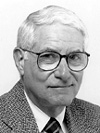| Home | Blog | Ask This | Showcase | Commentary | Comments | About Us | Contributors | Contact Us |

By dropping out, McCain, Giuliani bring a little sanity to Iowa 'straw poll'COMMENTARY | June 158, 2007Pity the poor pollsters working in Iowa, and analysts trying to make sense of their numbers. Romney leads in one Iowa poll but is third in another; Clinton leads in one and is last in another. By Gilbert Cranberg and Herb Strentz It’s not only such obvious polling stunts that the press should be leery of. More traditional polls have been producing results that also should be greeted with skepticism. Three recent polls of ostensible Iowa caucus-goers, all conducted in May within days of each other, had sharply contrasting outcomes. The Des Moines Register’s Iowa Poll showed Mitt Romney leading the Republican candidates with 30 percent, but the American Research Group, headquartered in New Hampshire, reported Romney in third place among Iowa Republicans with just 16 percent. Hillary Clinton led the Iowa Democratic field in the American Research Group poll with 31 percent, but she was last with just 16 percent in the telephone poll of Iowans by Strategic Visions, a polling firm based in Atlanta, Ga. Barack Obama had 24 percent support in one of the three polls but less than half of that in another. Iowa’s caucuses present tough polling obstacles. Despite the hoopla surrounding them, they are attended by only a small percentage of party members. Pollsters have to somehow locate and question that elusive number. They do it by asking a base sample of party members (the base numbers tend to be trade secrets) how many are likely to attend the party caucuses and poll them. Ideally, the polls should question not those "likely" to attend but only those who say they “definitely” will attend the caucuses, although that is seldom done, to hold down costs. The Iowa Poll used a final sample of 400 for each party; both of the other polling organizations each had samples of 600 respondents. But how reliable is a respondent’s claim that he or she plans to attend the caucuses months later? The claims could well be exaggerated because an admission of unwillingness to participate is an admission of unwillingness to do a civic duty. Besides, the inability to cast absentee ballots means that many won’t be able to meet the requirement by both parties that voters be physically present at the caucuses. The absence of a secret ballot at the Democratic caucuses could further discourage attendance. The difficulty of assembling a reliable sample of voters truly likely to attend the caucuses made Glenn Roberts, the long-time former director of the Iowa Poll, uncomfortable about doing any caucus polling, especially far in advance of the event. For the same reason, the press should be cautious about reporting on caucus polls. When the press does report a caucus poll, readers should be warned that, unlike polls of voters in primary states, the numbers they are about to read may not mean much.
|




